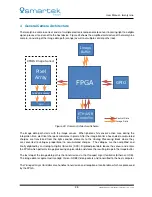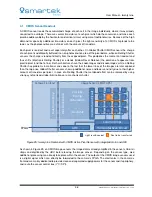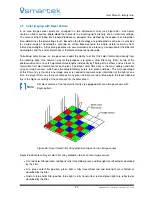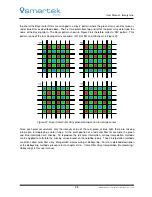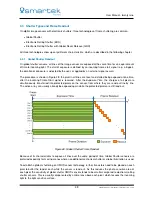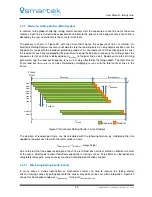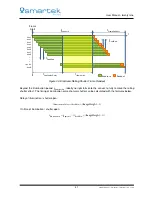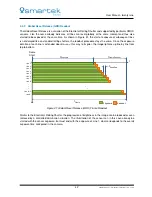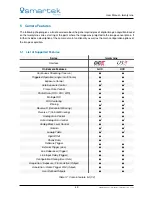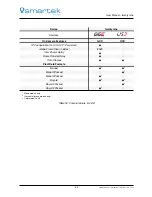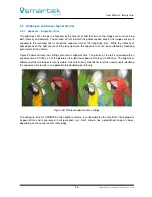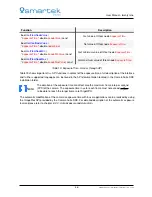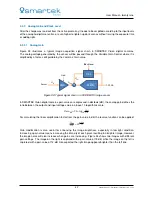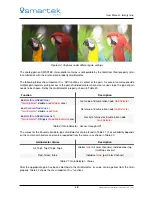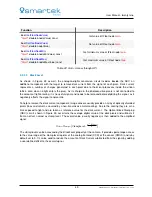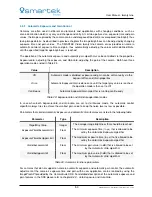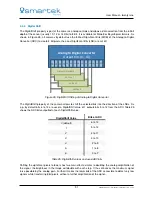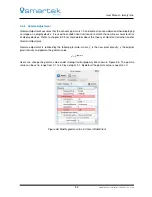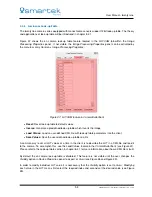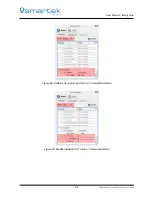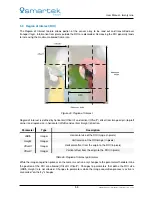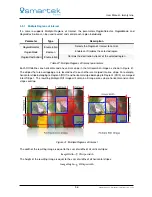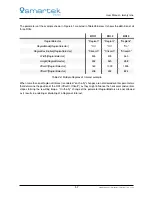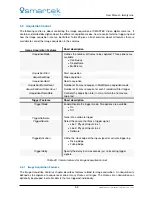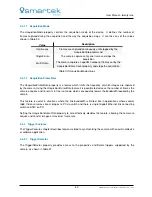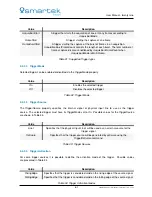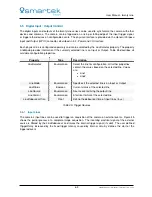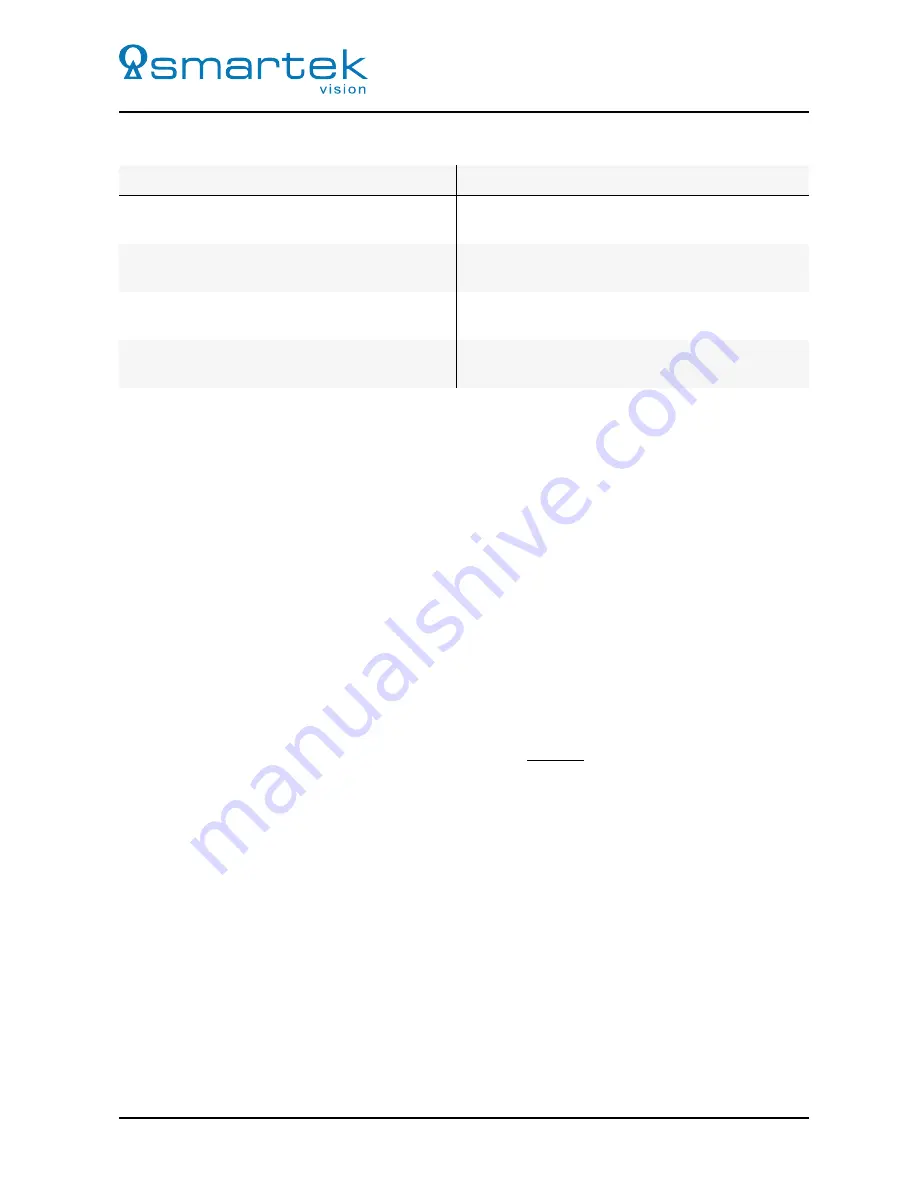
User Manual - twentynine
Function
Description
bool
GetFloatNodeValue
(
"
Gain
", double &nodeValue) const
Get value of IFloat node
Gain
.
bool
SetFloatNodeValue
(
"
Gain
", double nodeValue)
Set value of IFloat node
Gain
.
bool
GetFloatNodeMin
(
"
Gain
", double &nodeMinValue) const
Get minimum value of IFloat node
Gain
.
bool
GetFloatNodeMax
(
"
Gain
", double &nodeMaxValue) const
Get maximum value of IFloat node
Gain
.
Table 22: Gain - Access through API
5.2.2.2
Black Level
As shown in Figure 33 as well, the analog-to-digital conversion circuit includes beside the ADC an
additional component with the target to remove dark current from the signal of each pixel. Dark current
represents a number of charges generated in each pixel due to thermical processes inside the silicon
lattice, even when no light enters the pixel. As its charge in the photosensitive pixels is not connected to
the amount of light entering, it is no useful signal and needs to be removed before digitizing the signal, as it
negatively effects the signal to noise ratio.
To help to remove the dark current component, image sensors usually provide an array of optically shielded
pixels (lines and columns, covered by a non-transmissive metal coating). Due to the coating they are at no
time exposed to light and are taken as reference value for the dark current. The Optical Black Clamping
(OBC) circuit, shown in Figure 33, ascertains the average digital value of the dark pixels and subtracts it
from an offset, named as
clamp level
. The overall value (usually negative) is then added to the amplified
signal:
U
obc
=
U
amp
+
³
ClampLevel
−
P
n
i
=
0
(U
darki
)
n
´
The
clamp level
can be accessed by the
BlackLevel
property of the camera. It provides percentage access
to the value range of the clamp level register of the analog frontend (CCD) or the sensor (CMOS) and is by
default set to 0. It can be used to reduce the amount of Dark Current subtracted from the signal by adding
a user defined offset to the overall signal.
49
SMARTEK Vision | User Manual - twentynine | Doc. v1.0.2

